By Nicola Mantzaris, Photographic Metadata Cataloger
As part of the Centennial Digitization Initiative to commemorate the 100th anniversary of President John F. Kennedy’s birth, archivists have begun a large-scale digitization project to preserve and make accessible nitrate photographic negatives from the Kennedy Family Collection. With generous grant funding from the Fund II Foundation, the project aims to provide online access to approximately 1,700 black-and-white nitrate negatives, which will be cataloged and published to the Kennedy Library’s digital archives.
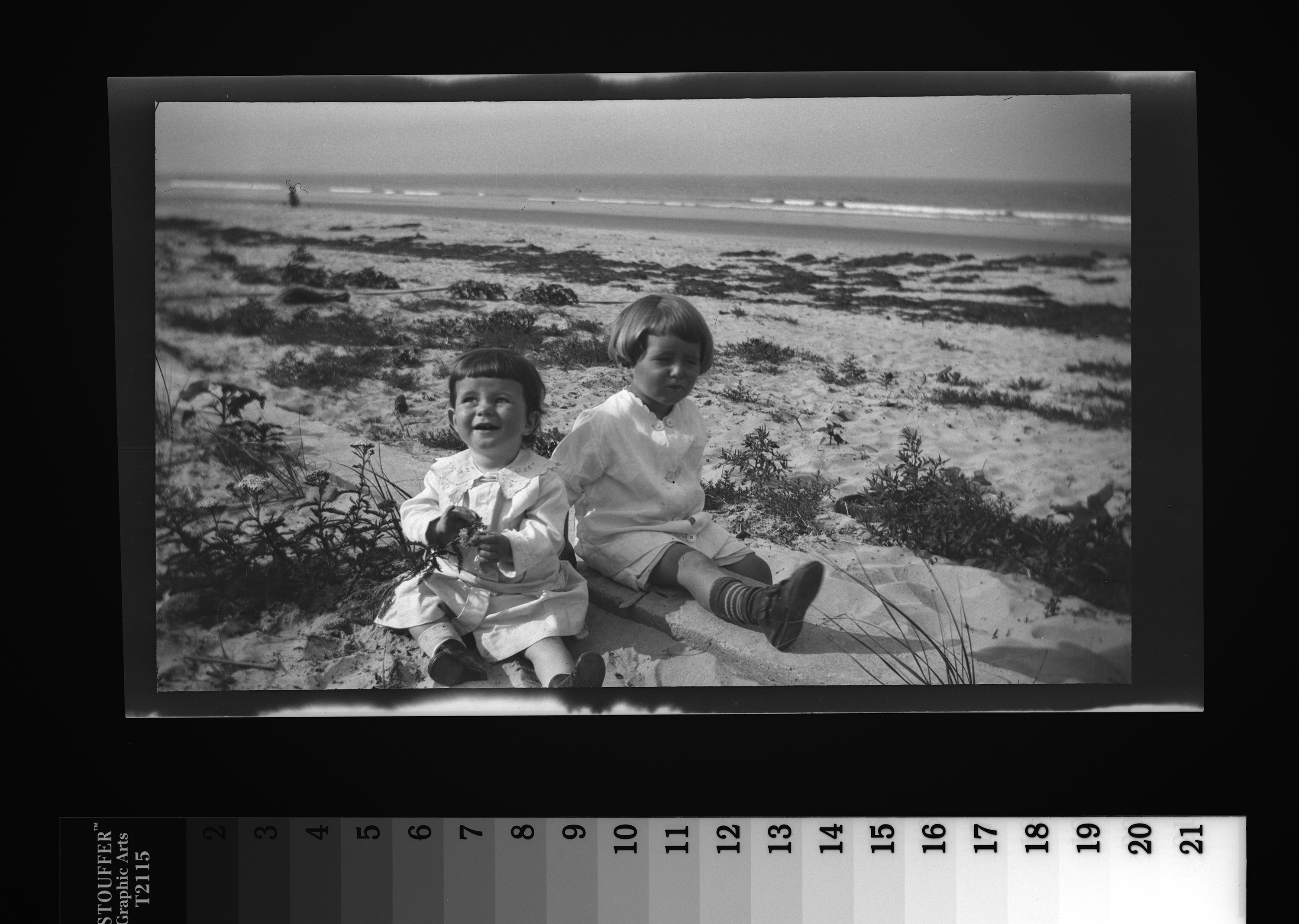
Nantasket Beach, Massachusetts, 1918
1 negative (black-and-white; 2 1/2 x 4 1/4 inches; film/plastic: nitrate)
© John F. Kennedy Library Foundation
The nitrate negatives comprise a subset of the photographic materials in the Kennedy Family Collection and include snapshots of John F. Kennedy, members of his immediate and extended family, as well as family friends, originating from before his birth to the early 1950s. They also feature photographs that capture Rose Fitzgerald (later, Kennedy) as a young woman during her travels abroad in the early 1900s. Similar to all family photo collections, the Kennedy Family Collection tells those unique but shared stories of daily home life, vacations, holidays, and other celebratory occasions. The nitrate negatives, however, tell a bigger story about the advent of amateur photography and the enthusiastic and prolific users of a new visual medium.
Nitrate and the Rise of Amateur Photography
More than a century ago, the introduction of cellulose nitrate film in still photography gave rise to a new generation of amateur photographers. By the late 1880s, nitrate became the first successful plastic film base material to support the light-sensitive emulsion layer of photographic negatives. Its lightness, flexibility, and convenience made possible technical advancements in amateur roll, single sheet, and pack film production. Film manufacturers also began introducing different models and sizes of cameras; as the photography industry evolved, companies like Eastman Kodak, Agfa, and Ansco continued to perfect and refine various formats of nitrate film.
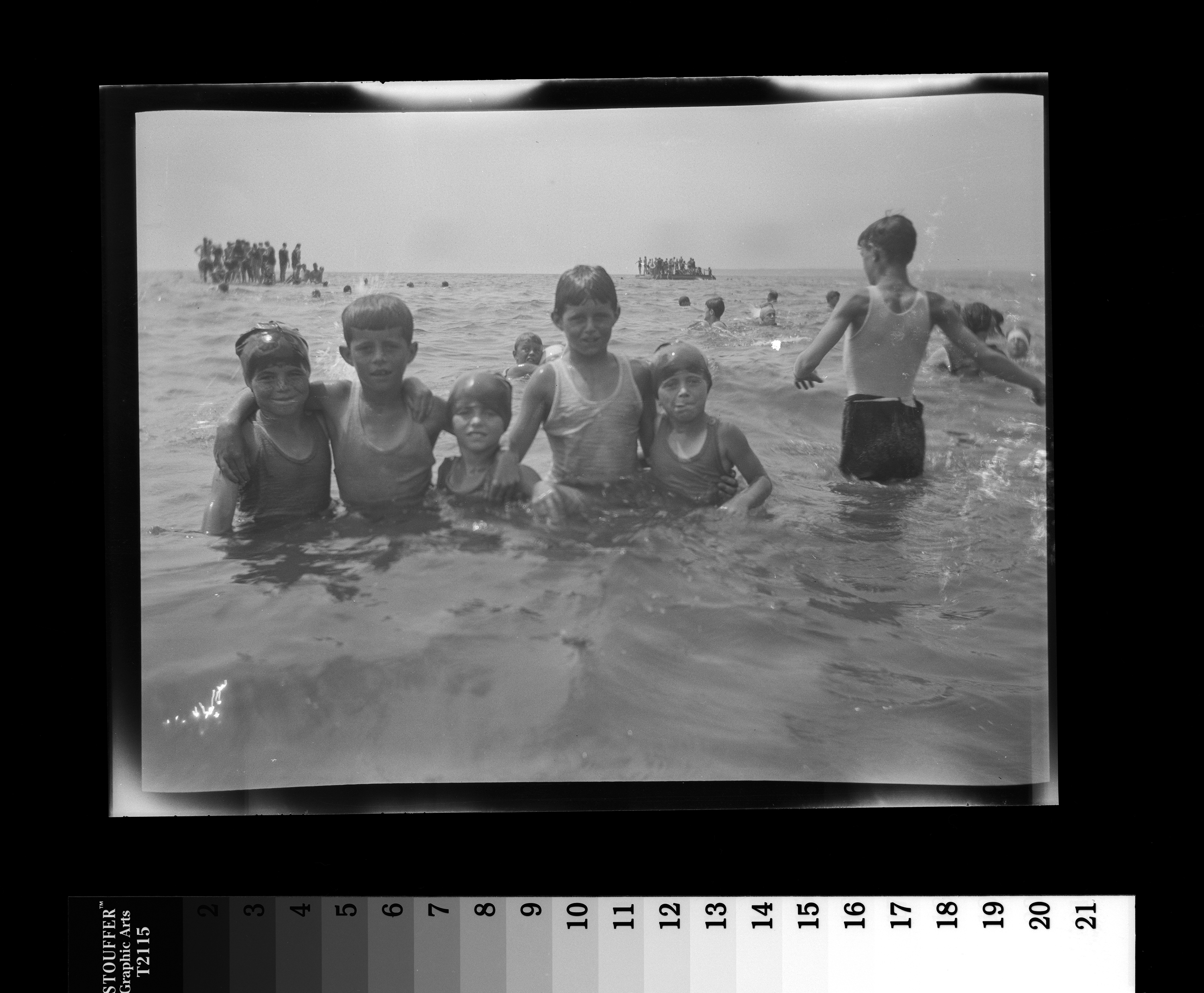
Hyannis Port, Massachusetts, ca. 1925-1927
1 negative (black-and-white; 3 1/4 x 4 1/4 inches; film/plastic: nitrate)
© John F. Kennedy Library Foundation
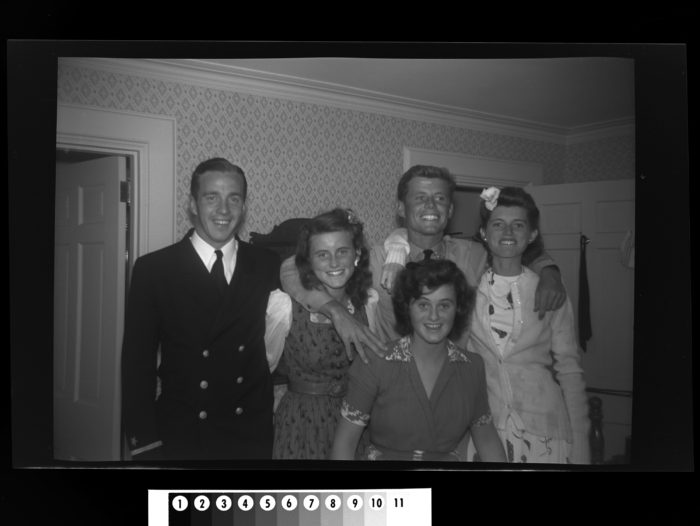
Hyannis Port, Massachusetts, 1942
1 negative (black-and-white; 2 1/4 x 3 1/4 inches; film/plastic: nitrate)
© John F. Kennedy Library Foundation
Varieties of Nitrate Represented in the Kennedy Family Collection
After surveying the nitrate negatives in the Kennedy Family Collection, it was immediately apparent that the Kennedy and Fitzgerald families stayed on the cutting edge of camera technology; they used the latest types of film formats and sizes available during the first half of the 20th century – including 35mm roll film and 3 x 4 inch single sheet or pack film:
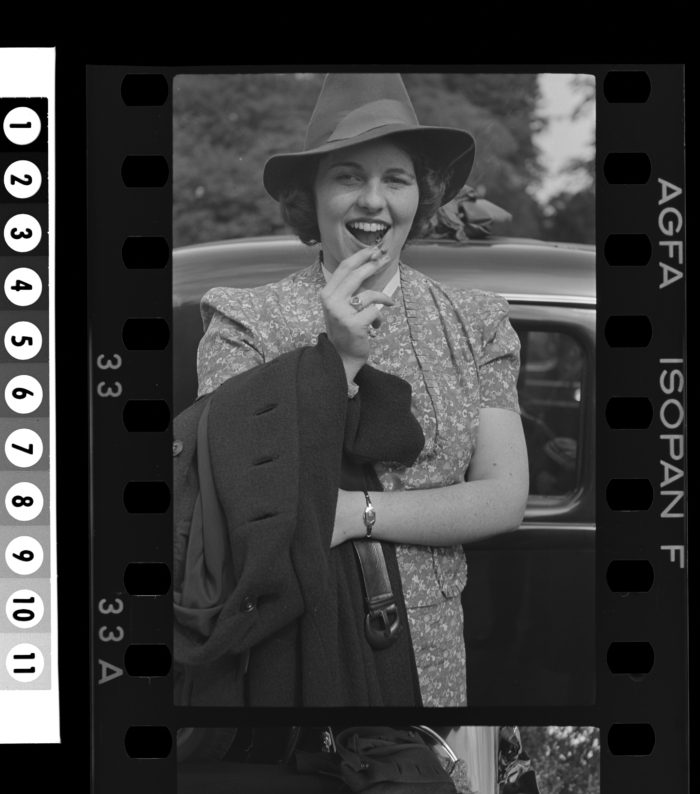
Kilcroney, Ireland, ca. 1938
1 negative (black-and-white; 35 mm; film/plastic: nitrate)
© John F. Kennedy Library Foundation
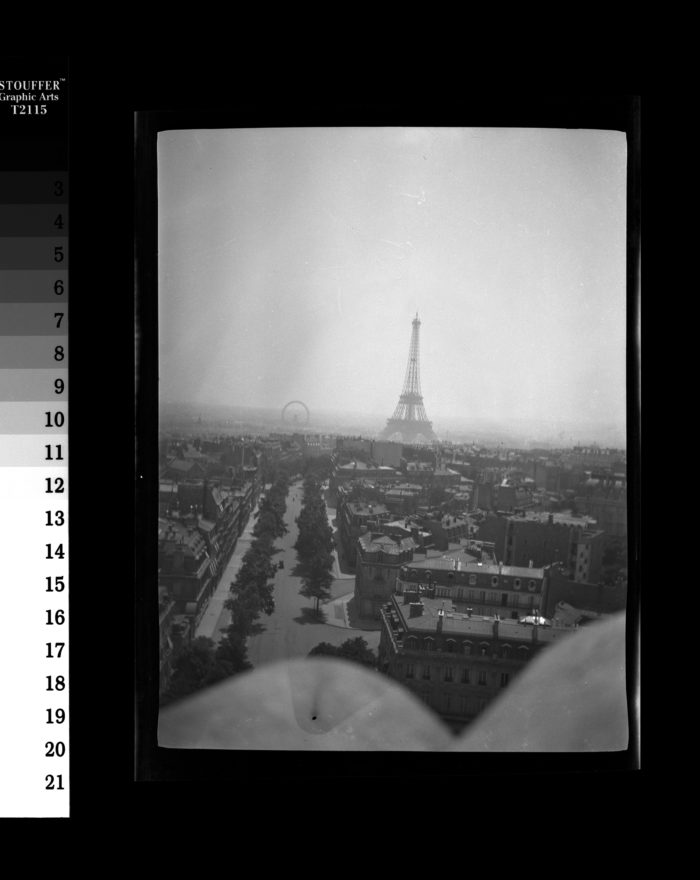
Paris, France, ca. 1911
1 negative (black-and-white; 3 x 4 inches; film/plastic: nitrate)
© John F. Kennedy Library Foundation
Scattered throughout the collection are photographic processing envelopes, which offer insight into the nitrate negatives typical of photographs from this time period and identify specific formats utilized by the Kennedy family. See examples below for 127 and 620 roll film:
While not all of the nitrate negatives in the collection have corresponding film development receipts or manufacturer edge-printing identifications, the vast majority, with the exception of the occasional odd-size negative, matches the following designations common to commercial roll and film pack formats of the time:
| Film Format Designation(s) | Nominal image size |
| 120 (105, 520, 50, 620) | 2 ¼ x 3 ¼ inches |
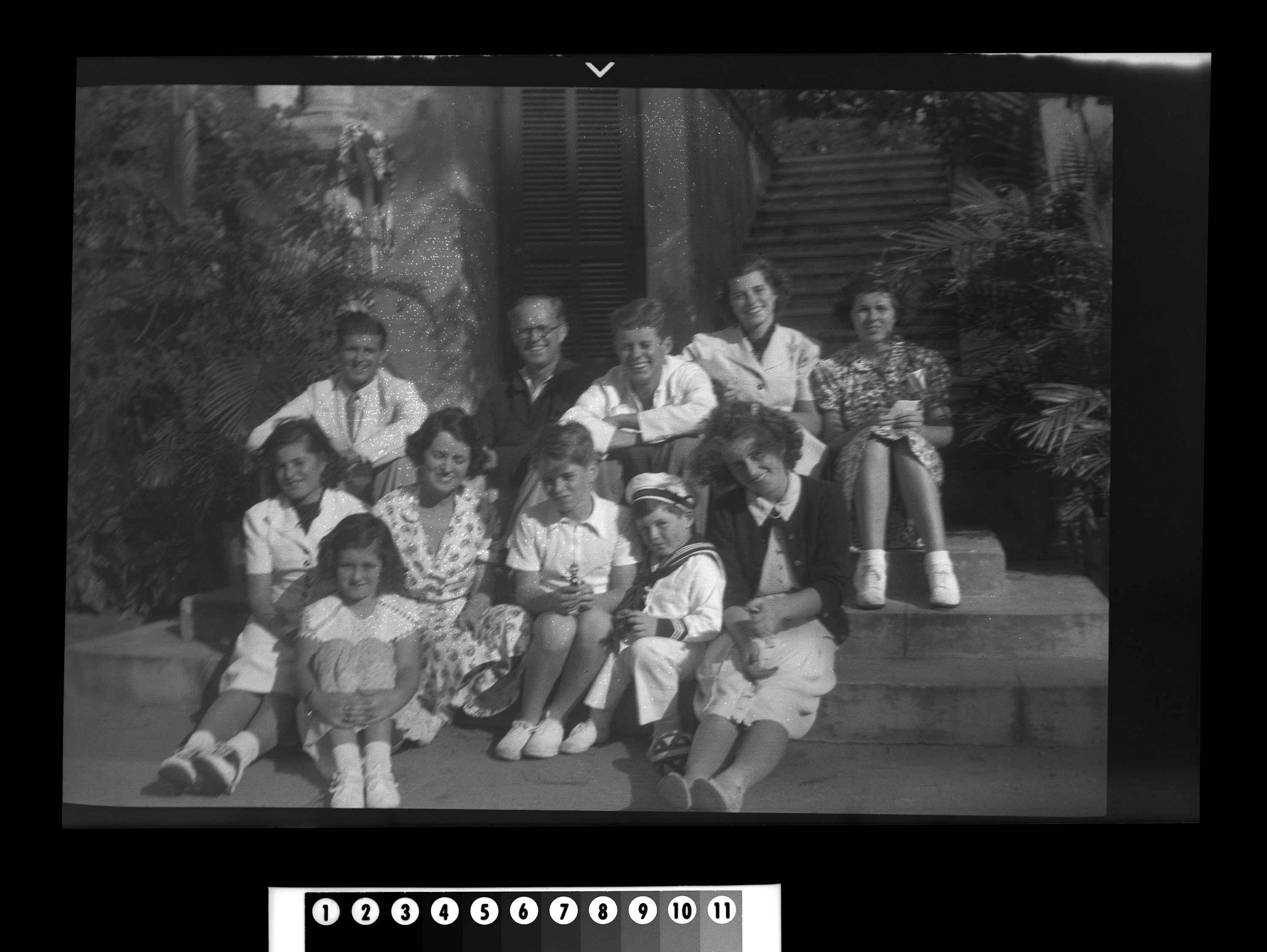
Palm Beach, Florida, 25 December 1937
1 negative (black-and-white; 2 1/4 x 3 1/4 inches; film/plastic: nitrate)
© John F. Kennedy Library Foundation
| Film Format Designation(s) | Nominal image size |
| 120 (220) | 1 ? x 2 ¼ inches |
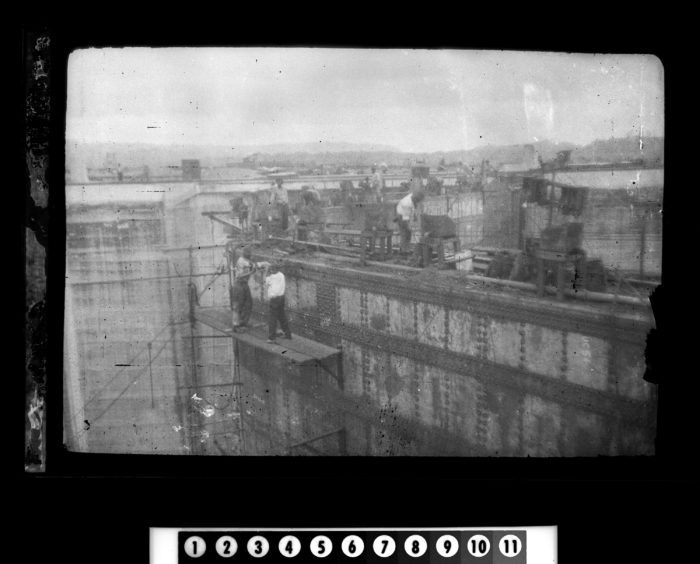
negative (black-and-white; 1 5/8 x 2 1/4 inches; film/plastic: nitrate)
© John F. Kennedy Library Foundation
| Film Format Designation(s) | Nominal image size |
| 120 | 2 ¼ x 3 ½ inches or 6 x 9 cm |
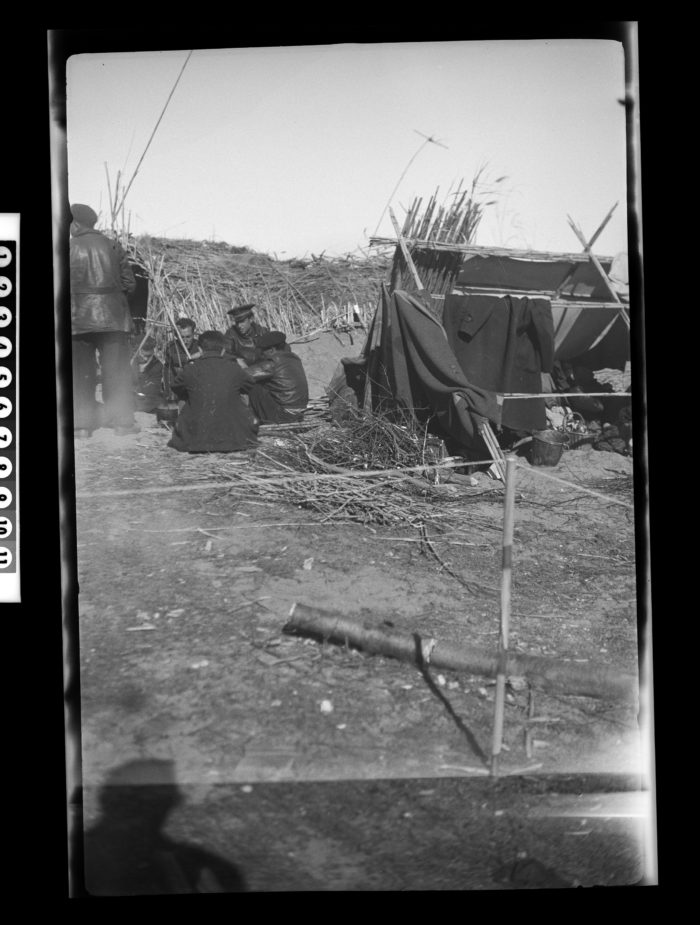
1 negative (black-and-white; 2 1/4 x 3 1/2 inches (6 x 9 cm); film/plastic: nitrate)
© John F. Kennedy Library Foundation
| Film Format Designation(s) | Nominal image size |
| 116 (516, 616) | 2 ½ x 4 ¼ inches |
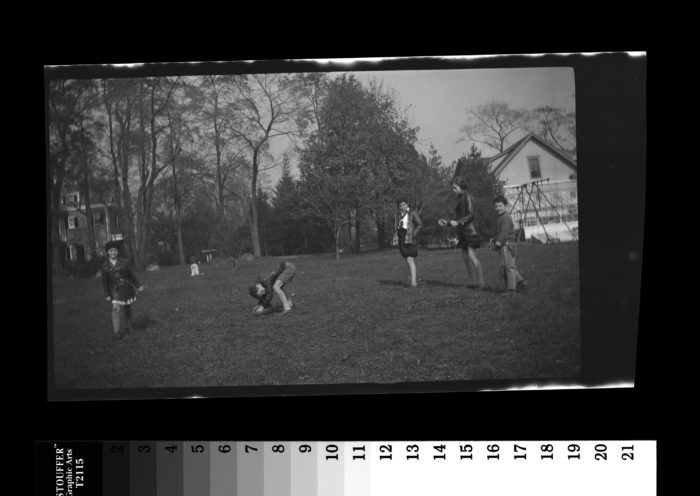
Bronxville, New York, October 1934
1 negative (black-and-white; 2 1/2 x 4 1/4 inches; film/plastic: nitrate)
© John F. Kennedy Library Foundation
| Film Format Designation(s) | Nominal image size |
| 127 | 1 ? x 2 ½ inches |
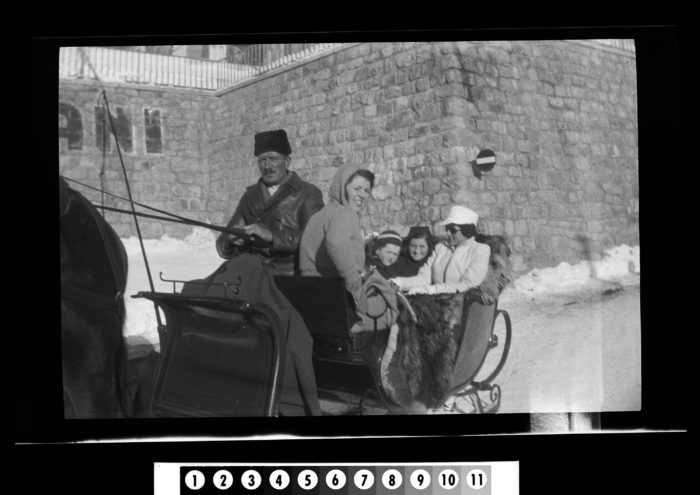
St. Moritz, Switzerland, ca. 24 December 1938 – January 1939
1 negative (black-and-white; 1 5/8 x 2 1/2 inches; film/plastic: nitrate)
© John F. Kennedy Library Foundation
| Film Format Designation(s) | Nominal image size |
| 127 | 1 ? x 1 ? inches |
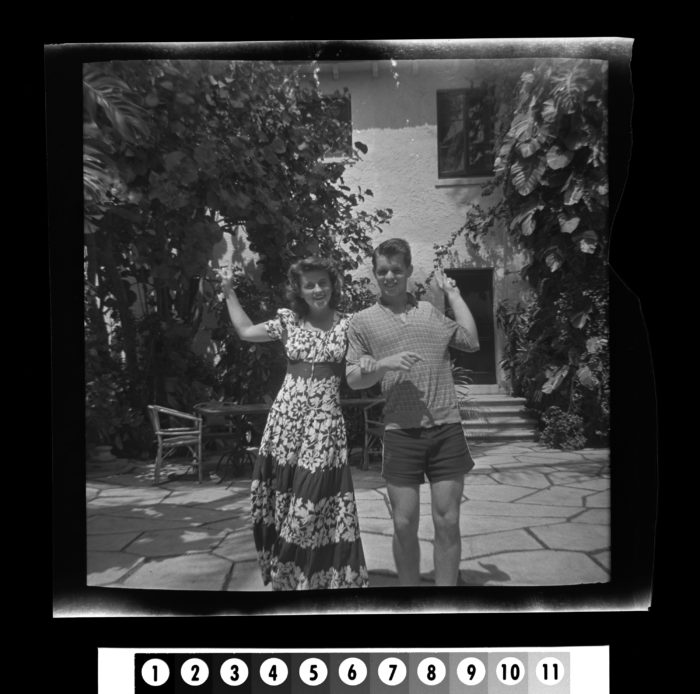
Palm Beach, Florida, April 1941
1 negative (black-and-white; 1 5/8 x 1 5/8 inches; film/plastic: nitrate)
© John F. Kennedy Library Foundation
| Film Format Designation(s) | Nominal image size |
| 118 (107, 108, 119, 518, 124, 51) | 3 ¼ x 4 ¼ inches |
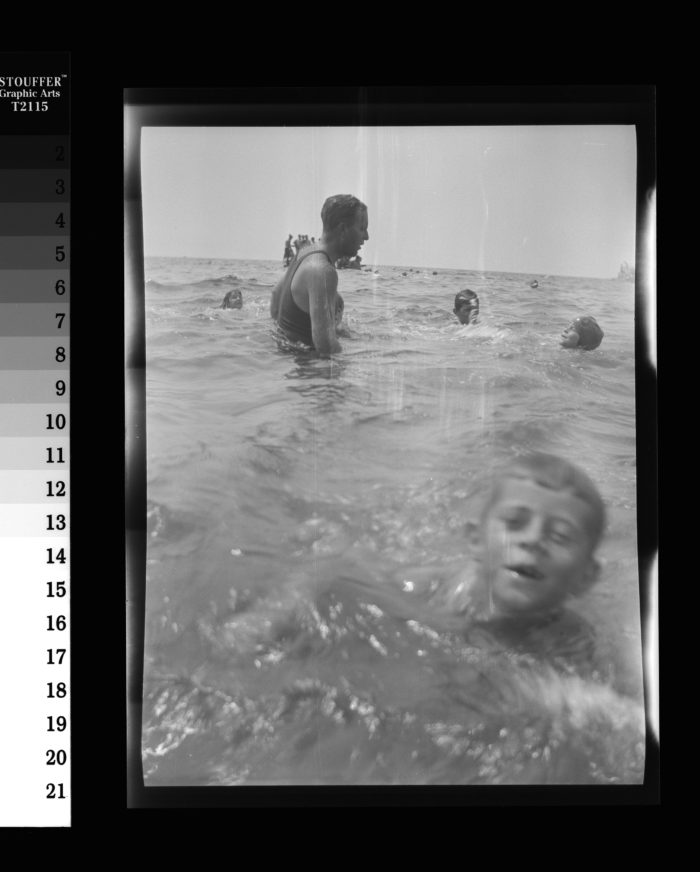
Hyannis Port, Massachusetts, ca. 1925-1927
1 negative (black-and-white; 3 1/4 x 4 1/4 inches; film/plastic: nitrate)
© John F. Kennedy Library Foundation
| Film Format Designation(s) | Nominal image size |
| 122 (522, 125, 543) | 3 ¼ x 5 ½ inches |
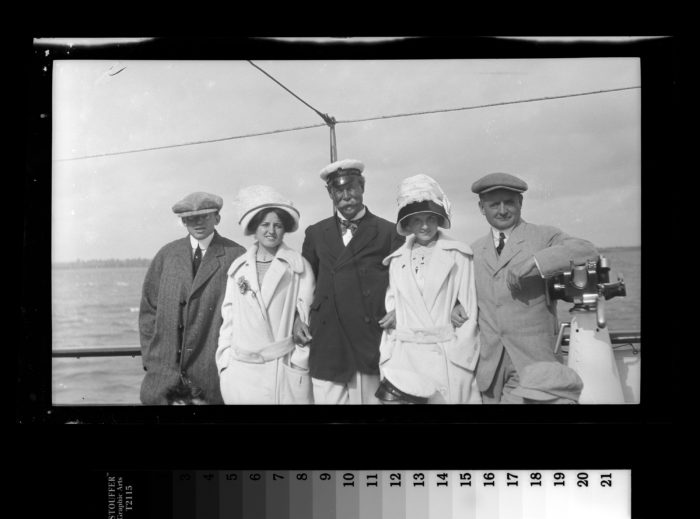
Cowes, England, ca. 7 August 1911
1 negative (black-and-white; 3 1/4 x 5 1/2 inches; film/plastic: nitrate)
© John F. Kennedy Library Foundation
Nitrate Preservation Won’t Wait
In the early years of photography, nitrate film represented both beauty and innovation with its aesthetically rich tones and exceptional technical properties. Its chemical composition, however, posed problems and nitrate soon became renowned for being extremely flammable, inherently unstable, and readily susceptible to rapid deterioration and loss of image detail. By the time film manufacturers discontinued nitrate production in 1950, prolific amateur photographers like the Kennedy and Fitzgerald families had accumulated numerous nitrate negatives in their personal collections.
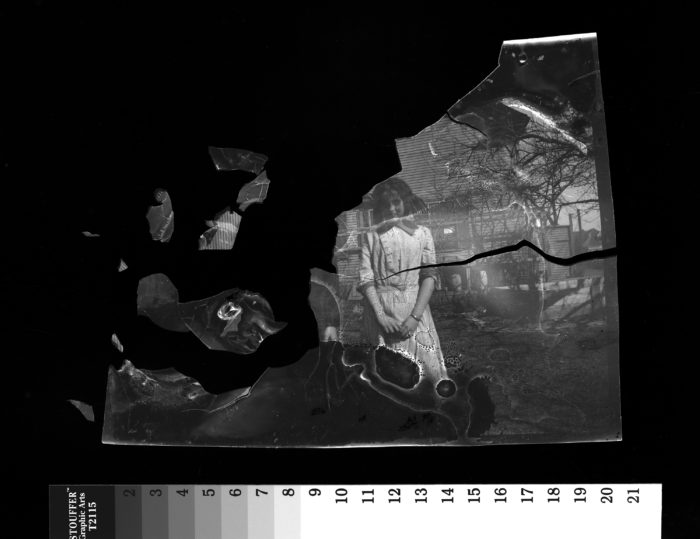
Dorchester, Massachusetts, ca. 1908-1913
1 negative (black-and-white; 3 x 4 inches; film/plastic: nitrate)
© John F. Kennedy Library Foundation
Very few nitrate negatives in the Kennedy Family Collection are as severely damaged as the one above; though the rate of decay is not as high for still negatives as it is for rolled motion picture film, the threat to image stability is an urgent preservation concern for archives entrusted with their care. Current best practices for the safe handling and long-term preservation of nitrate materials came out of the archivist-driven “Nitrate Won’t Wait!” movement, which mobilized the profession to help save this early photographic heritage literally in danger of disappearing.
At the Kennedy Library, cellulose nitrate materials are stored separately in a cold storage environment where freezing temperatures arrest eventual decomposition. Preservation reformatting and/or digitization is common archival practice when it comes to endangered materials like nitrate. Faithful digital surrogates provide greater access and ensure future use while the physical negatives remain safely preserved in their original format and condition.

Palm Beach, Florida, 1945
1 negative (black-and-white; 2 1/2 x 4 1/4 inches; film/plastic: nitrate)
© John F. Kennedy Library Foundation
Increased Access to Historic Negatives from an Historic Family Photo Collection
Digitization of all Kennedy Family Collection nitrate negatives is complete thanks to reformatting services provided by the Northeast Document Conservation Center (NEDCC). Archivists are steadily working on preparing the access and archival master files for ingest into the Library’s digital asset management system.
At this stage, archivists are embedding in each file metadata that: describes the digital object; authenticates its original source (physical dimensions and material condition); and documents copyright and use restriction information and the technical specifications used in its creation.
Next steps include creating robust descriptions and metadata records for all nitrate negatives so that users can browse, search, and discover these historic materials on the Library’s website. Descriptions will also incorporate original caption and inscription information to retain meaningful links between the original negatives and their many derivative prints found in the various scrapbooks and albums contained in the collection.
Archivists look forward to sharing updates on the cataloging progress of the Kennedy Family Collection nitrate negatives. Stay tuned to this blog and be sure to check the collection finding aid in the coming months for hyperlinks to digitized content.
KFC1721N and KFC1722N. Left to right: Tom Killefer, Edward M. Kennedy, Robert F. Kennedy, and Joseph P. Kennedy, Jr.
Palm Beach, Florida, December 1941 – January 1942
2 negatives (black-and-white; 2 1/4 x 3 1/4 inches; film/plastic: nitrate)
© John F. Kennedy Library Foundation
SOURCES
Fernanda Valverde, María. “Photographic Negatives: Nature and Evolution of Processes, 2nd” Mellon Advanced Residency Program in Photograph Conservation (George Eastman House/Image Permanence Institute). 2005. https://www.imagepermanenceinstitute.org/webfm_send/302
“Film Format.” Wikipedia. https://en.wikipedia.org/wiki/Film_format
Fischer, Monique. “5.1 A Short Guide to Film Base Photographic Materials: Identification, Care, and Duplication.” Northeast Document Conservation Center. https://www.nedcc.org/free-resources/preservation-leaflets/5.-photographs/5.1-a-short-guide-to-film-base-photographic-materials-identification,-care,-and-duplication
“The History of Kodak Roll Films.” The Brownie Camera Page. http://www.brownie-camera.com/film.shtml
“History of Kodak Roll Film Numbers.” http://bvipirate.com/Kodak/FilmHist.html
The Focal Encyclopedia of Photography. 1969. New York: McGraw-Hill.
Slide, Anthony. 2001. Nitrate Won’t Wait: A History of Film Preservation in the United States. Jefferson, N.C.: McFarland & Co.
Vitale, Tim. “History, Science, Preservation and Treatment of Cellulose Nitrate Still Film.” June 12, 2009. http://videopreservation.conservation-us.org/library/history_storage_of_cellulose_nitrate_film_v26.pdf
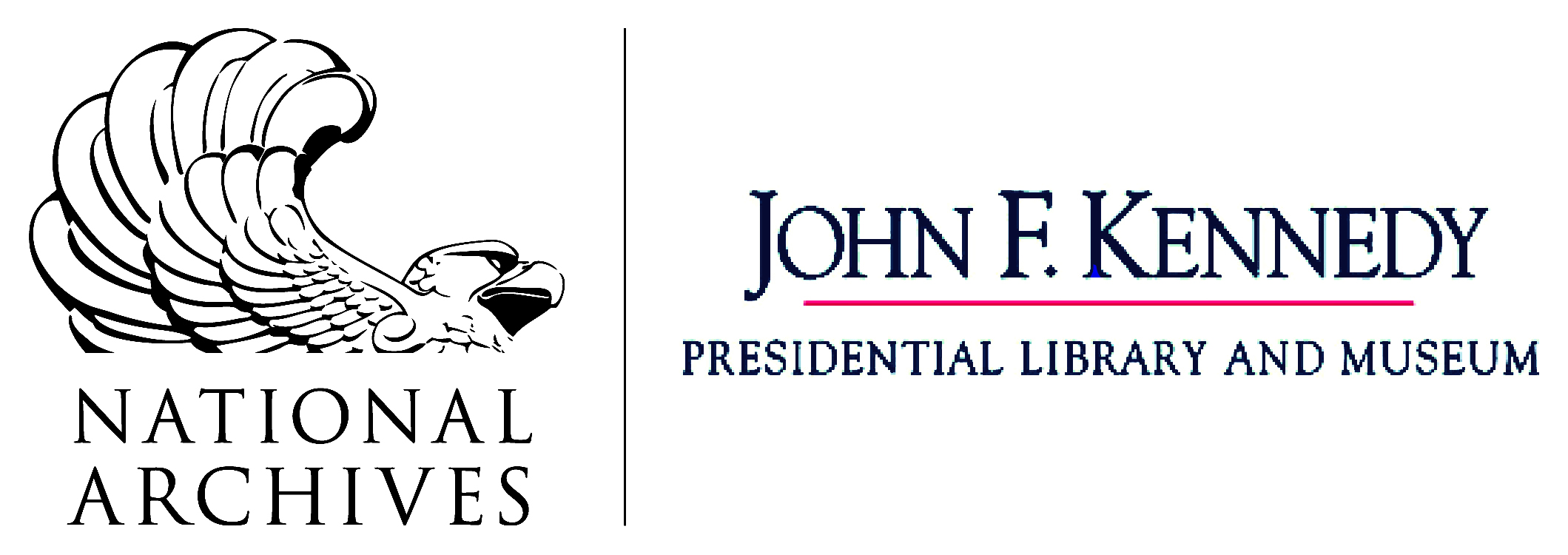
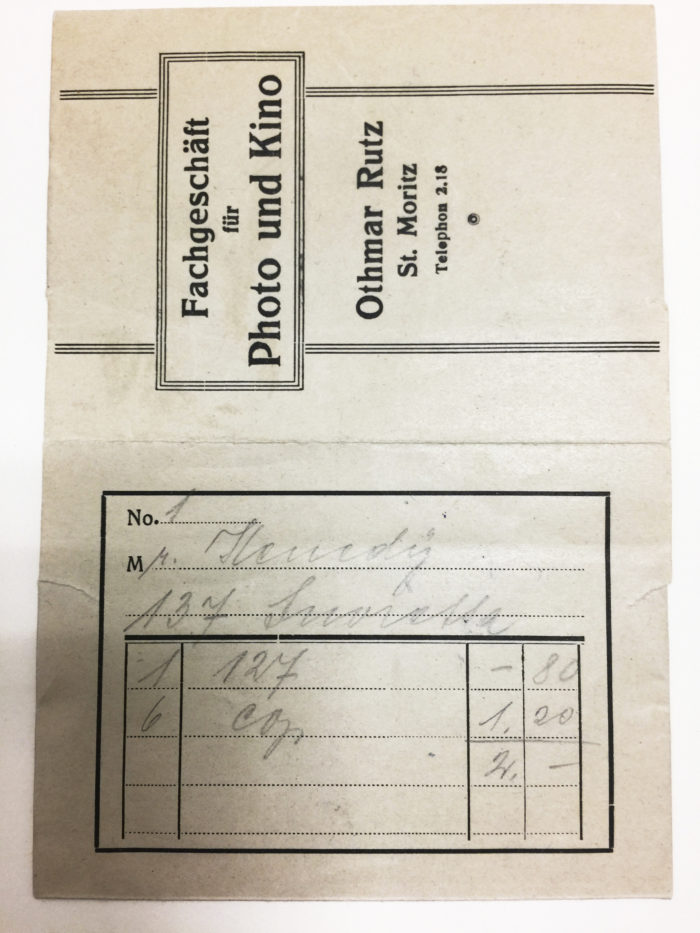
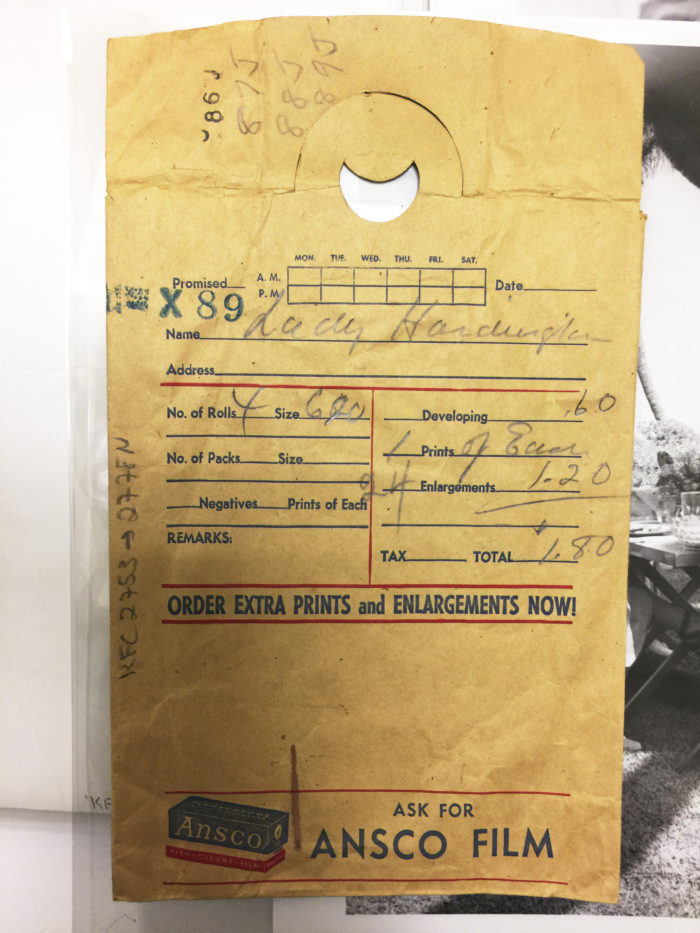
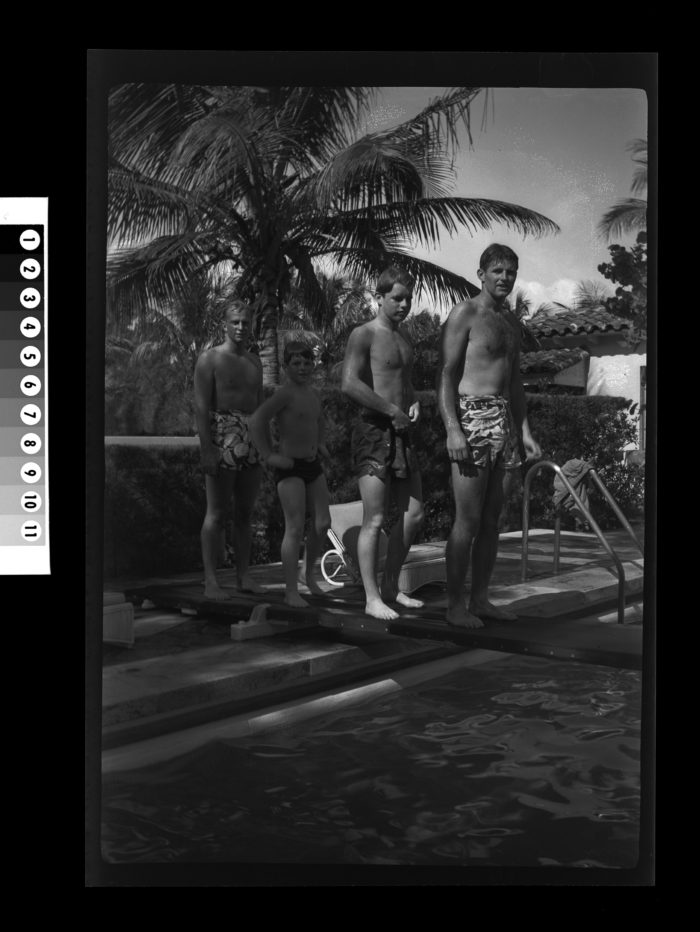
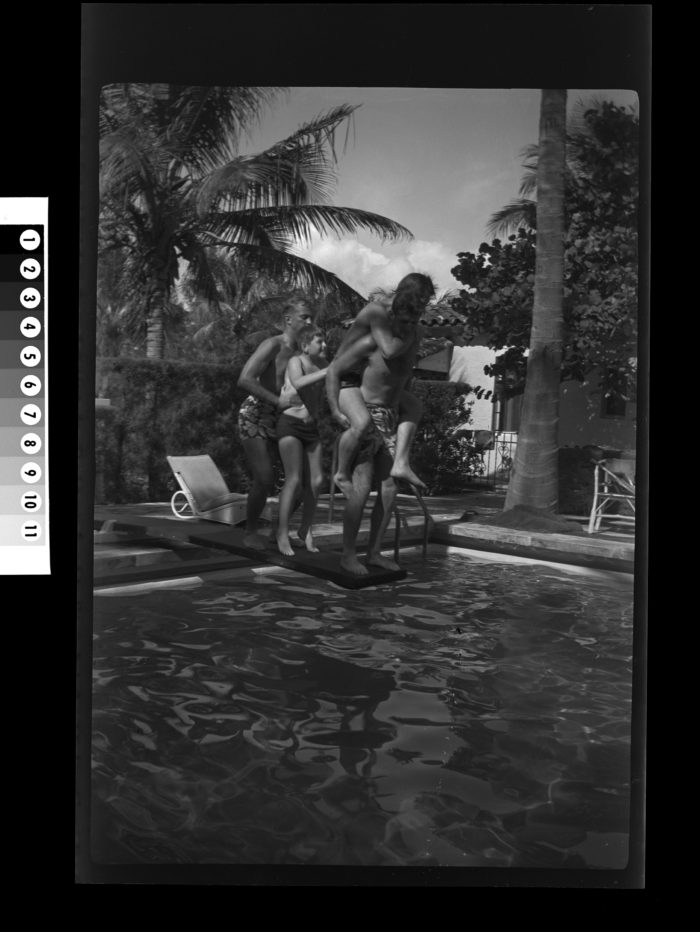
[…] September 11, 2021September 15, 2021 ~ margaretscull Rosemary Kennedy, John F. Kennedy, Eunice Kennedy, Joseph P. Kennedy, Jr., and Kathleen Kennedy in Hyannis Port, Massachusetts in 1925. (John F. Kennedy Library Foundation) […]